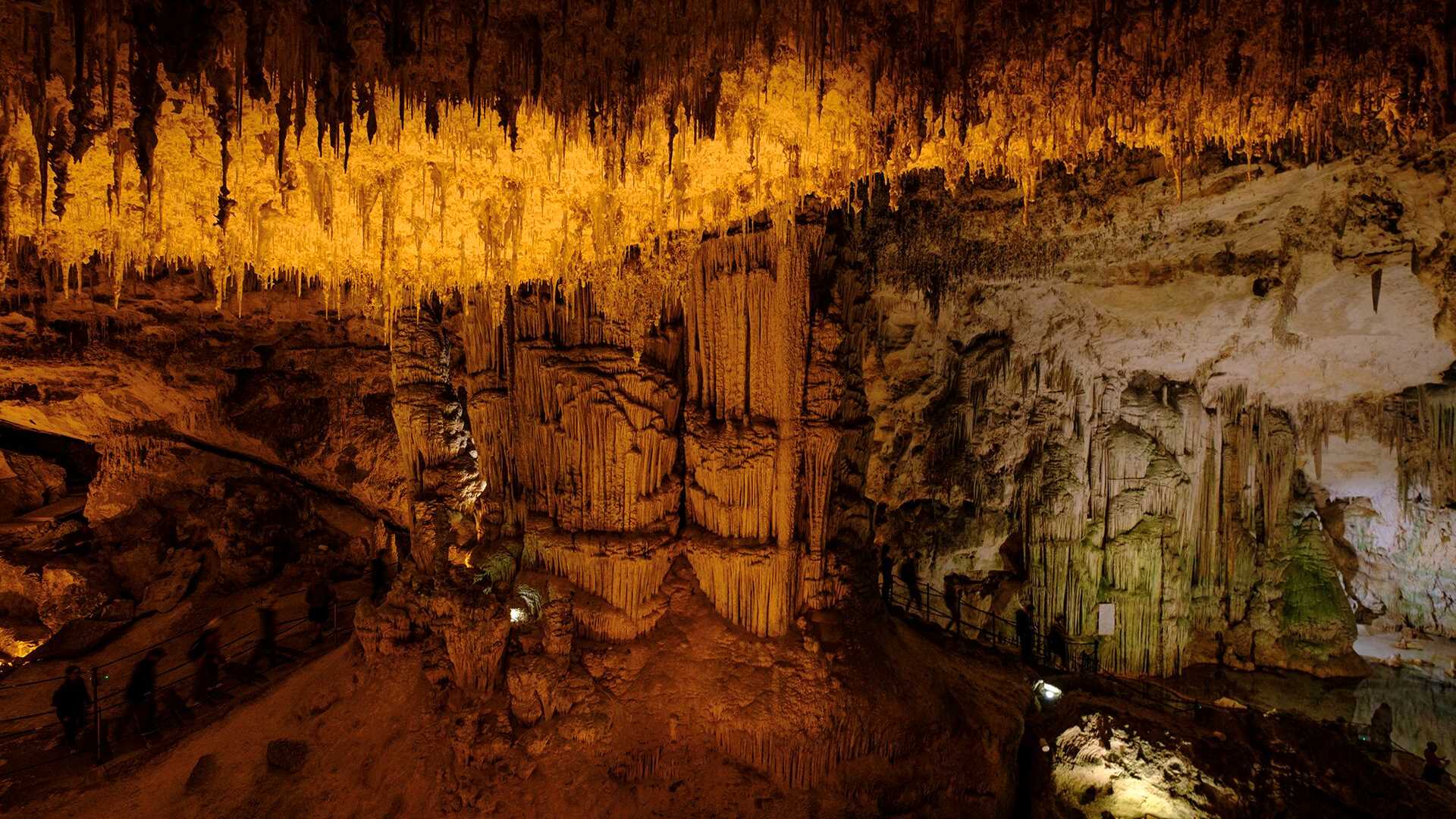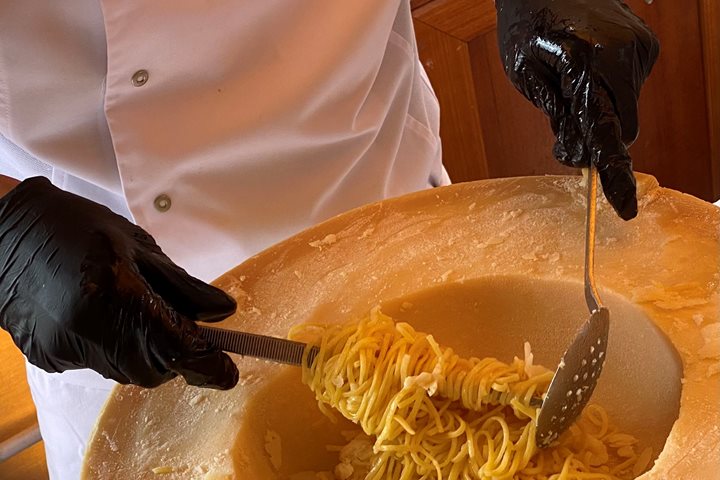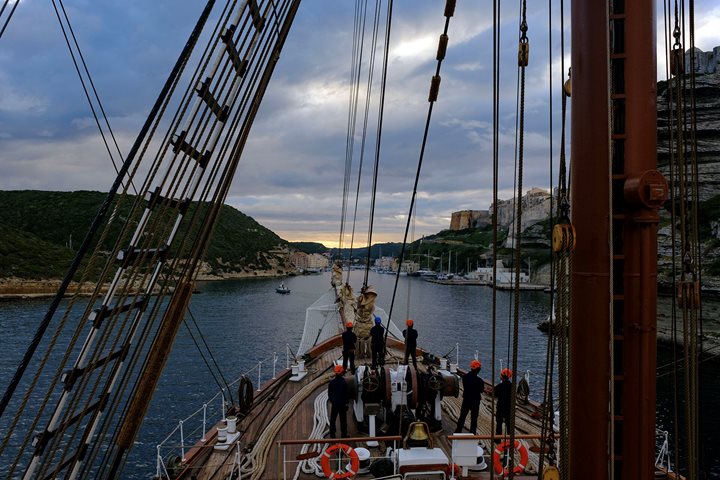We awoke to an overcast sky with a temperature of 51° F. The sea was virtually flat, and the mistral that was with us yesterday was gone. We boarded tenders at 8:30 a.m. for our trip to the port, where we broke into two groups. Some of us went on an excursion to Neptune’s Cave, and others went on the excursion to the Nuraghi Palmavera. The ride out to the caverns was memorable, as was getting off the boats and into the cave. Neptune’s Cave is a wondrous series of colorful interior grottos that abound with stalagmites and stalactites and reflecting pools of crystalline waters.
Those who visited the Nuragi took a short bus ride to a scenic overlook over the Bay of Porte Conte. We then made our first visit to the Nuragi site of Palmavera. These early peoples began to construct stone towers and villages as early as the 18th century BCE. The precise meaning of the word “Nuragi” is pure conjecture with some speculating that it refers to stone or fire, deriving from the eastern Mediterranean, possibly Mesopotamia, but that seems unlikely. The sites typically consist of a central tower (the “tholos”) surrounded by small huts where the people lived. The similarity of the earlier “tholos” tower of Mycenaean Greek seems inescapable. In fact, during the excavations, Mycenean ceramics were found in many places in Sardinia. The more complex sites, as is the settlement at Palmavera, consist of two traditional “tholos” towers surrounded by a perimeter stone wall outside of which are a sizeable number of circular stone huts. The interior walls of the towers show the most wonderful corbel structure with the stones decreasing in size and weight as they go upwards with each course of stone overlapping the one beneath by just a bit. And thus, at the end, you have an enclosed, strong, beehive-like structure.
After lunch, we visited the organic vineyard and olive groves of “Leda̕ D’Ittiri.” There, the owner introduced us to the three wines she makes, a rosé, a white, and a powerful red (15% alcohol) made with the indigenous Cagnulari grape of Alghero. We sampled nice pecorino cheeses with the wines and finished with an olive oil tasting. All the products are organic, and no pesticides are used in production. We returned to Alghero and had some time for shopping and snacking on gelato and pastries.
We sailed from Alghero shortly after 5:00 p.m. on our way to Corsica. Dinner was in the dining room, and we were serenaded by our redoubtable pianist Mario.








